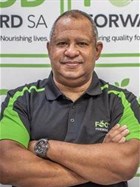






In South Africa, although we produce enough food to feed our entire population, more than one third (10 million tons) of all the food we produce is lost or wasted every year, costing our economy more than R75m annually, and results in gross wastage of scarce resources and severe environmental degradation.
Yet, in this world of plenty, millions of people are starving, there are growing inequities, poverty is deepening, and global conflicts along with the climate crisis have pushed food prices and the cost of living to record levels, leaving millions of households struggling to put food on the table.
UNICEFs 2024 report on Child Food Poverty in South Africa reveals that 23% of our children suffer from severe food poverty, while 37% suffer from moderate food poverty.
“The consequences of severe food poverty can last a lifetime,” says Christine Muhigana, UNICEFs South Africa Representative in the report.
The report finds that nearly half (46 per cent) of all cases of severe child food poverty are among poor households where income poverty is likely to be a major driver.

Connecting this world of plenty (surplus food) to a world of need is our core focus at FoodForward SA. We recover bulk surplus food from various food supply chain farm-to-fork partners and redistribute this good food every month to nearly one million vulnerable people through a network of 2,500 registered and vetted beneficiary organisations (BOs) countrywide.
While much of this surplus food is collected using our own fleet from farms, packhouses, manufacturing plants, and distribution centres, and brought to our warehouses in each of the nine provinces, we recognised early on that a technology solution would allow us to scale faster and more cost-effectively.
In 2016, FoodForward SA launched its proprietary digital platform called FoodShare. This tech solution has revolutionised our model, by introducing Virtual FoodBanking (VFB) - making digital connections between participating retail stores and BOs within our network for the regular collection of surplus food, including remote towns and villages.
FoodShare allows us to intercept, recover, and redistribute good quality surplus food timeously and efficiently. This technology not only allows us to scale across South Africa, but also provides a B2B solution to our retail partners - Woolworths, Pick n Pay, Food Lover's Market, and Spar, by significantly reducing their food waste and its associated costs. Since VFB integrates with USSD and WhatsApp, there are no data costs to BOs.

We currently have 1,250 BOs reaching 485,000 food insecure people daily, connected to FoodShare, involving five participating retail and other partners. We are in discussions with new partners, including chain restaurants, to be included in the near future. Of the 22,000 tons of food we recovered in the last financial year, more than 60% was from VFB.

FoodShare is continuously evolving, and apart from VFB, integrates several innovative applications, including:
As food production increases to meet the growing demand of our population, so will food loss and waste, which is set to increase beyond the $1 trillion mark annually. Wasting food unnecessarily is unjustifiable in our context and is therefore not only a humanitarian or social issue, it’s an economic and environmental imperative as well.
Technology like FoodShare is a crucial scalable solution towards solving some of our time’s most complex challenges, such as climate mitigation and adaptation, while simultaneously addressing food insecurity and malnutrition.
